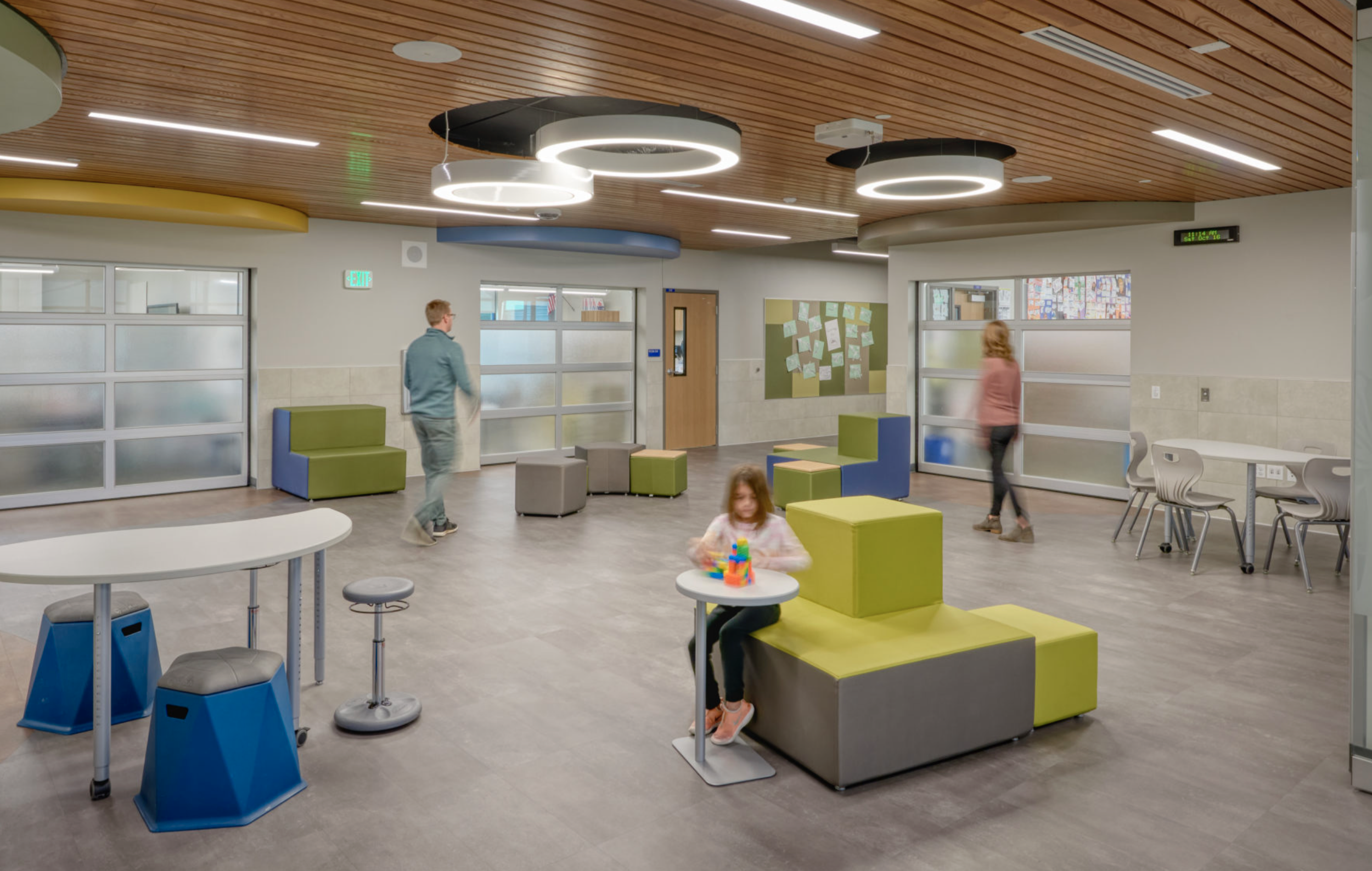Designing for All Children. How a Well-Designed Space Can Help Small Children with Special Needs
A well designed space may be one of the most powerful tools a school, pediatric facility and a parent can implement to promote learning in children with special needs, A well designed space can increase learning and also, reduce your child’s stress, anxiety and enhance their overall well-being.
As designers, we have the ability to manipulate our environment to maximize the experience of any end user and as a healthcare interior designer with over 10 years of experience designing for healthcare and k-12 environments, I've witnessed firsthand the profound impact a thoughtfully designed space can have on small children with special needs.
While there are design guidelines for commercial spaces required by the Americans with Disabilities Act (ADA) to increase the ability for children with special needs to learn more successfully like including ramps, handicapped-accessible bathrooms, doors, countertops, railing extensions to ensure safety and more; there is a variety of interior design principles and tools that can also be implemented in residential and commercial spaces for the benefit of children with special needs. Here are some examples:
Appropriate Use of Color:
Colors play a significant role in influencing mood and behavior. There is a reason why when I am working on a healthcare project, you will see soft blues and greens at my desk. It goes beyond creating a beautiful space, it has to be with color psychology and effect color can do on our subconscious.
Cool Colors: Shades of blue and green are known to have a calming effect and can help reduce anxiety. For children with learning disabilities, this goes a long way, but not any cool colors will work, ensure soft and calming colors like the ones you see at the ocean, mountains and other natural environments.
Warm Colors: Yellows and oranges can stimulate creativity and energy, but should be used wisely to avoid overstimulation.
Neutral Tones: Using neutral backgrounds with pops of color can create a great balanced and an inviting environment without being overwhelming.
2. Sensory Friendly Design
Children with learning disabilities often have a higher sensitivity to their environments and can get distracted easily. Bright lights, loud noises, and chaotic spaces can be extremely overwhelming. Designing sensory-friendly spaces involves:
Great Lighting: Natural light is always best, but for those locations where artificial lighting is needed, using soft and adjustable light fixtures is key to create a calm atmosphere. Always go with dimmable light fixtures and watch the height of the fixture.
Acoustics: make sure to Incorporate sound-absorbing materials like carpets, acoustic panels, fabrics, rugs and curtains to minimize noise. Quiet zones and private nooks are essential for children who may need a break from overstimulation. Additional these types of soft surfaces add safety to any space.
Textures: Providing a variety of tactile experiences through different materials can be soothing. Smooth, soft, and natural textures are often calming. these is the perfect location to place that basket with stuffs and touch and feel books.
3. Providing a “Yes Space” for the Child”.
I actually didn't learn this from college or designing for healthcare environments, I learned this as I joined Montessori conferences and courses while implementing Montessori at home since my first baby was 6 months old. The idea here is that instead of thinking of only the crib as a safe space, childproofing the entire room will provide children with a bigger space to move around, feel safe and practice their skills, while also giving the parents a piece of mind whenever we need to step away. Creating a yes space does not need to be complicated, here are a few tools: Less is always more with decor, avoid sharp edges, a floor bed where the child can have easy access is ideal, place children toys at their reach, make sure to wall mount any dressers or cabinets and my favorite, instead of enclosing the child within a “child fence” or pack and play, use wall mountable fences to enclose the area that you don’t want them to touch (around the fireplace, at the entry of the staircase, by the door, etc).
4. A Layout that Encourages a Variety of Activities, Promotes Interaction and Engagement
This is true for any child, but more so for children with special needs, because the space will inspire children and invite them in. Here is what I recommend including in your playroom:
A safe space that encourages movement: Providing areas where children can move freely, helps those who may need to expend energy or who struggle with sitting still for long periods of time.
A quiet zone: Soft seating options like bean bags and blankets can accommodate various learning styles and physical needs.
Imaginative zone with lots of storage: I recommend baskets for easy cleanup.
Tinkering space: often placed outside, but with solid surfaces, these spaces become easy to clean and maintain indoors.
5. Incorporating Nature
Nature has a calming and restorative effect on everyone. Here are some easy ways you can incorporating natural elements into your children spaces beyond plants.
Natural light: This might be the most important natural element to include on any space. For more on this, check our article: “How increase wellness and happiness through your home design”.
Nature-Inspired Designs: Using wall coverings with nature inspired patterns, colors, and materials can create a serene environment.
Soothing color schemes
Outdoor Spaces: Providing access to outdoor play areas or nature views can offer a refreshing break and promote physical activity.
6. Personalization and Inclusivity
A playroom is the perfect place to display that art piece that your children have been working on.
Adding pictures of their friends and special items they have been gifted and those nature treasure they have collected during a walk is ideal.
Let them tell you what are their favorite colors, movies, characters and be sure to incorporate those through pillows, images and books. These can give them a sense of ownership and comfort.
Remember: Design isn't just about aesthetics, it is about transformation and creating moments of joy in the most challenging circumstances. Making the space work for you, so that you can create happiness with your love ones.
Written By: Andrea Meats








